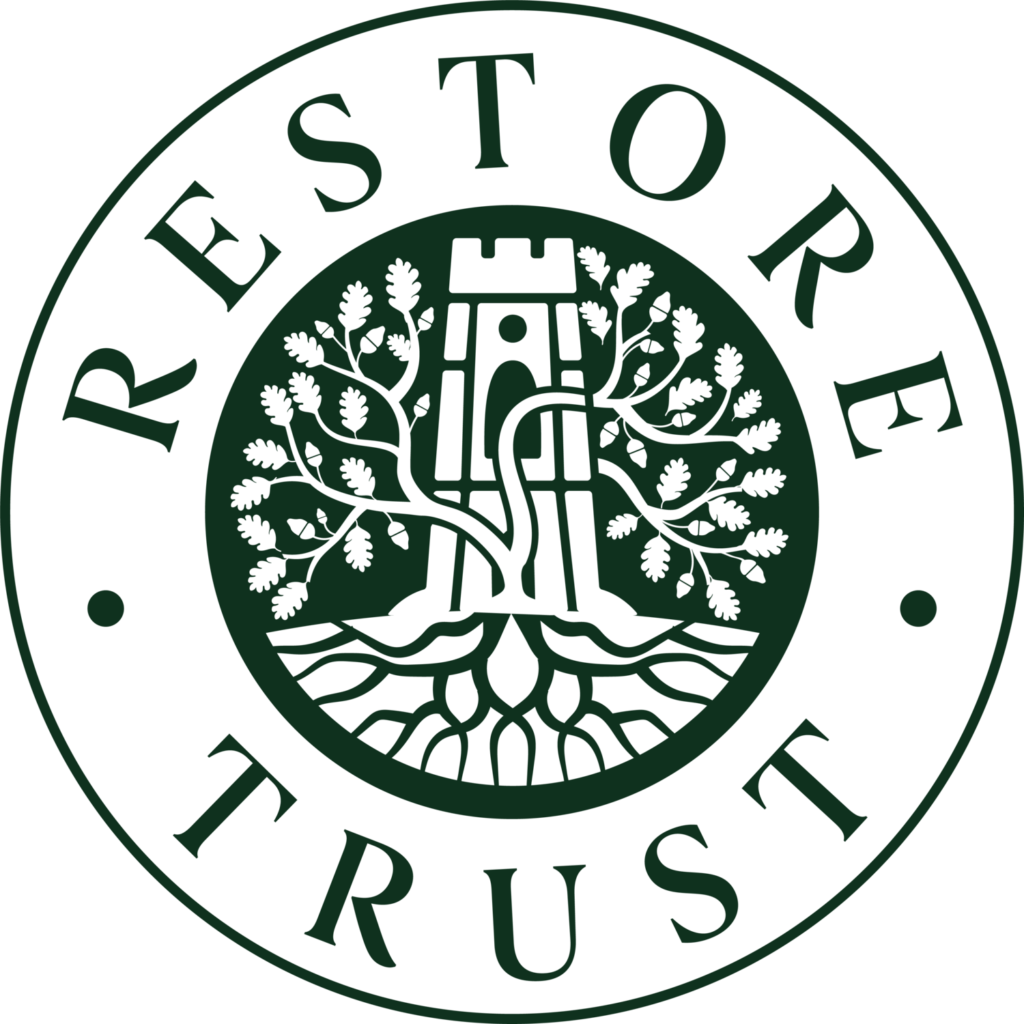
Save our Clandon
.
Menu
Ian Constantinides, the master plasterer who restored Uppark
by Clem Cecil
08/05/25
Clem Cecil reminisces about meeting the plasterer Ian Constantinides and tells about a lecture given in his memory in 2016, shortly before Clandon House was gutted by fire:
The lecture this year, organised by Ian’s widow Sarah Constantinides, was called Up from the Ashes: The Restoration of Historic Buildings After Calamitous Fire. Some of Ian’s major achievements involved rebuilding post fire: Uppark House, following the fire of 1989, Prior Park, burnt down in 1991, Windsor Castle after the fire of 1992, and St Ethelburga’s church in the City of London following the IRA bomb of 1993. Ian disliked the cult of expertise—he always called himself a builder and considered that the best way to learn was on the job. Under his supervision, master craftsmen were born at the sites he restored—they learned from copying the work of masters that they were reconstructing and restoring.
Working parallel with Ian at Uppark, was Geoffrey Preston, who restored the plasterwork. He is now one of the most skilled architectural sculptors and creators of fine plasterwork in the country. His work is breathtaking.
Another master, Clare Venables, also spoke. She restored the plasterwork at Windsor Castle after the fire. The plasterwork is a riot of gilded baroque scrolls, foliage and birds. Close up it is less refined than that at Uppark, but as Clare pointed out, it was to be seen from much further away as the ceilings are 40 feet high.
The skill involved in this level of craftsmanship is truly staggering. When Uppark was burnt out, there were not the existing skills in the country to restore it-neither for the plasterwork-Geoffrey Preston was still training-nor for the woodwork. The carpenter’s guild closed ranks on Ian as they knew they could charge whatever they wanted for the work-it was the biggest job going at the time. Ian refused to deal with them and opened the tendering process up to non-professional carvers, asking them to send in samples. In the end the team was made up of both: those with little or no training indeed did learn on the job.
The talk on Friday opened with an enlightening introduction from Martin Drury. Drury was chairman of the National Trust during the time of several fires. He talked us through several of these, and the lessons that were learned. Following the fire at Nostell Priory in 1980, the National Trust realised that there were not enough photographic records of their properties. As a result, they invested an enormous amount in recording their buildings after this, thanks to which there was a thorough record of Uppark when it burnt in 1989. Martin Drury showed extraordinary photographs of salvage squads, including the Meade-Fetherstonehaugh family who lived in a part of the house, at work clearing the house of its contents as the fire raged. All in this short National Trust video.
By the end of the evening, after a raging debate over the value of rebuilding that which is lost, we understood that great craftsmen are trained during these reconstructions. It was also clear that the sooner the decision is made the better, while the memory of the house is still alive. A decision has finally been made about Clandon Park and what is to be done there, following last year’s fire. Martin read us the National Trust press release and the news that it is to be restored to a better version of itself, rather than as it was just before the fire. Here is an extract:
Dame Helen Ghosh, the Trust’s director general, said:
“The fire at Clandon was shocking, but gives us the opportunity not only to show our respect for the heritage of the past, but also to create new heritage for the future. Our plans involve returning parts of the house to its 18th century glory whilst at the same time creating a building of beauty and relevance for the 21st century. Given their historic and cultural significance, and the fact so many original features have survived, we believe we should restore the magnificent state rooms on the ground floor – the most architecturally important and beautiful rooms. The loss of so many of the contents of the house means that we cannot return it to how it looked the day before the fire. However, we now know more about the original layout and recognise that the enduring significance of the house is its architecture and so we would like to return it to the 18th century design – making it a purer, more faithful version of Clandon as it was when it was first built.”
Restoring it to a better version of itself is extremely ambitious—for one thing, nobody has seen this version. And saying that it is an opportunity “to create new heritage for the future,” gives me the creeps: that is exactly what the Mayor of Moscow did in the 2000s, leading to inaccurate results and setting disastrous precedents. However, hopefully no such excesses will be pursued and I wish them all the best: after all, rebuilding Uppark was also very ambitious and it was a success.
One lady in the audience had recently visited Uppark and said that information about the fire and subsequent reconstruction was not in evidence. When asked, one of the guides had said to her that there had been a reconstruction, all done by eastern European workers. There is no record of the fire on the website.
I hope that at Clandon, the work of the craftsmen restoring and reconstructing, and the innovative methods they will inevitably have to come up with, will be celebrated. And that a new generation of woodworkers, plasterers and masons subsequently grows out of the tragedy of the fire.